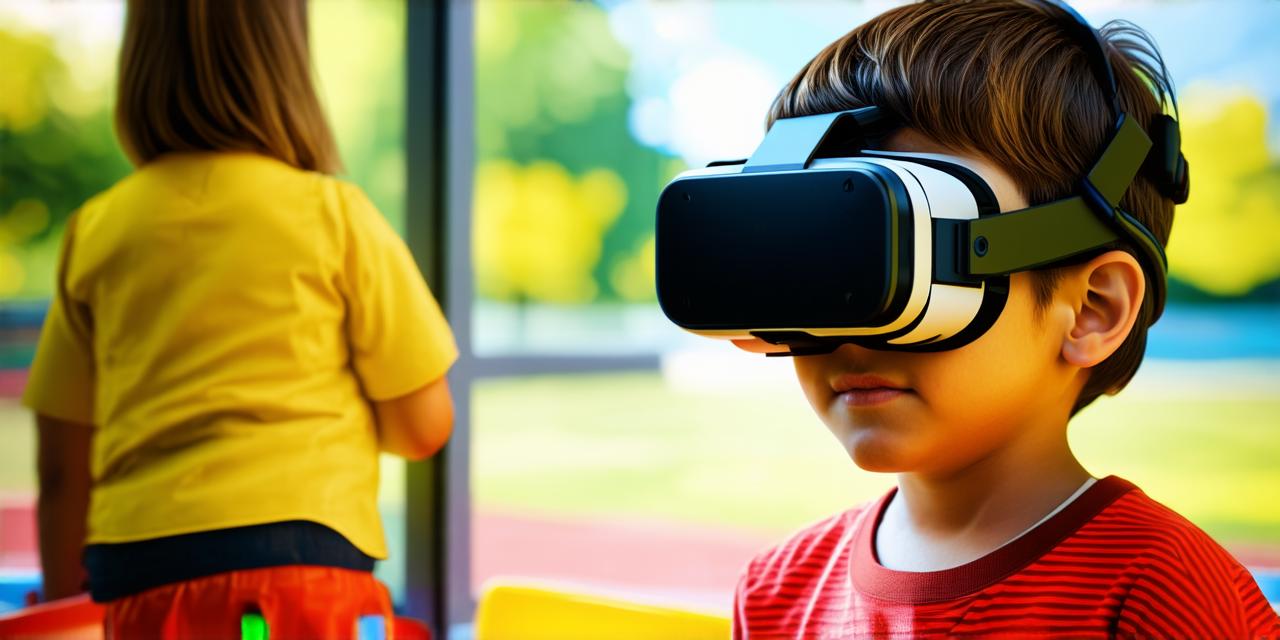Virtual reality (VR) technology is becoming increasingly popular among children and adults alike. With VR headsets, users can immerse themselves in a digital world and experience new things that they may not be able to in real life. However, as with any technology, there are concerns about the safety of using VR headsets, particularly for children. In this article, we will examine the potential risks associated with VR headsets and explore how developers can ensure that their products are safe for young users.
Potential Risks Associated with VR Headsets
One of the main concerns about VR headsets is that they can cause motion sickness. This is particularly true for children, who may not have as much experience with technology and may be more susceptible to motion sickness. Motion sickness can cause nausea, dizziness, and headaches, which can be uncomfortable and even dangerous in some cases.
Another potential risk associated with VR headsets is that they can cause eye strain. This is because VR headsets often require users to focus their eyes on a fixed point in the distance while wearing the headset, which can lead to fatigue and discomfort. Eye strain can also be exacerbated by poor lighting conditions or if the user has to adjust the focus of the headset frequently.
There are also concerns about the potential impact of VR headsets on children’s cognitive development. Some studies have suggested that excessive use of technology, including VR headsets, may lead to a decrease in attention span and an increase in impulsivity. This can be particularly problematic for young children who are still developing their cognitive skills.
Ensuring the Safety of VR Headsets for Children
Despite these potential risks, there are steps that developers can take to ensure that their VR headsets are safe for children. One important step is to conduct thorough testing on the headset before it is released to the public. This should include testing for motion sickness and eye strain, as well as testing for any other potential health risks.
Developers should also consider designing their VR headsets with child safety in mind. For example, they may want to incorporate features that limit the amount of time a child can spend using the headset or that require parental approval before use. They may also want to consider incorporating filters or other technologies that can help reduce motion sickness and eye strain.
It is also important for parents to be aware of the potential risks associated with VR headsets and to take steps to ensure their children are using them safely. This may include limiting the amount of time a child spends using the headset, ensuring that the headset is properly adjusted, and providing a comfortable and well-lit space for use.
Case Studies and Personal Experiences
One example of a VR headset designed specifically for children is the Oculus Quest 2. This headset includes features such as parental controls and a built-in filter that can help reduce motion sickness. According to Oculus, the Quest 2 has been well received by both parents and children, with many reporting positive experiences using the headset.
Another example is the Samsung Gear VR, which was designed with adult users in mind but can also be used by children. The Gear VR includes features such as adjustable eye tracking and a built-in filter that can help reduce motion sickness. However, some parents have reported concerns about the potential risks associated with the headset and have chosen not to allow their children to use it.
Research and Experiments

There is limited research on the long-term effects of VR headsets on children’s cognitive development. However, some studies have suggested that excessive use of technology, including VR headsets, may lead to a decrease in attention span and an increase in impulsivity. This is particularly concerning for young children who are still developing their cognitive skills.
